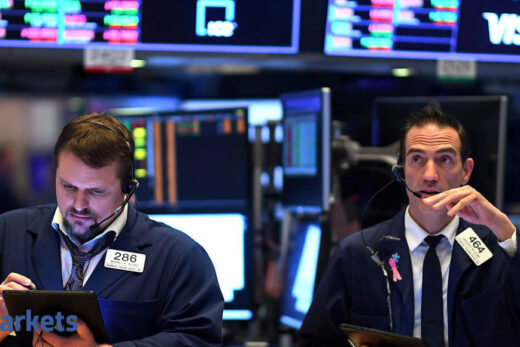The reflation trade stalled during the summer. But the central bank said this week it would likely begin pulling back on its $120 billion a month government bond purchasing program as soon as November, while also signaling that it may raise interest rates in 2022, earlier than many expected.
Though monetary tightening is frequently seen as a drag on stocks, some investors view the Fed’s stance as a vote of confidence for the U.S. economy.
“Normally, a hawkish turn would be bad for risk-on assets, particularly equities… the fact the Fed is putting this out there signals to the market that the economy is on pretty firm footing,” said Ralph Bassett, head of North American equities at Aberdeen Standard Investments.
The Russell 1000 Value index, where reflation-trade stocks are heavily represented, is up 0.9% since the start of the quarter, well behind the 5.7% gain in the Russell 1000 Growth index over the same time. The value index is up 17% year-to-date with the growth index up 19%, compared to an 18.7% rise for the S&P 500.
Market watchers have also kept a close eye on Treasury yields, which have risen since the Fed meeting as expectations of stronger growth and inflation worries drove some investors out of safe-haven government bonds.
The benchmark U.S. 10-year yield recently stood at 1.45%, near its highest level since the start of July. Higher yields on Treasuries make some stocks less attractive.
Analysts at UBS Global Wealth Management said the 10-year yield will rise to 1.8% by year-end but do not believe such a move will disrupt equities. The pace of any rise would be key: the bank’s research showed that a three-month change in nominal yields of between 50 and 100 basis points has been accompanied by a 5.7% return in the MSCI US index since 1997.
“Only a rise in real yields of more than 50 bps over three months would likely weigh on equity returns, particularly in emerging markets,” the bank said in a report.
Investors will watch a raft of U.S. economic indicators next week, including durable goods orders and the ISM manufacturing index, as well as the progress of debt ceiling negotiations in Washington.
Investors will also monitor developments in the Evergrande saga, after the heavily indebted Chinese company missed a payment deadline on a dollar bond this week, leaving global investors wondering if they will have to swallow large losses when a 30-day grace period ends.
Margaret Patel, a senior portfolio manager of equity and fixed income funds at Wells Fargo, said Fed tapering should benefit high-yield bonds because it implies a stronger economy that will result in fewer corporate defaults.
The trend of U.S. coronavirus case counts will also influence financial markets, said Jim Paulsen, chief investment strategist at the Leuthold Group. A COVID-19 resurgence earlier in the year helped undercut forecasts for the U.S. economic rebound.
“We know where to go during the reopening cycle,” he said, referring to value stocks and small caps.
The current seven-day moving average of U.S. case counts now stands at 146,182, a 6.1% increase over the previous seven days, though there was an 1.8% decline in the number of tests that proved positive for the virus, according to the Centers for Disease Control.
At the same time, investor confidence in the economy could be dented by a prolonged fight over raising the U.S. debt ceiling, analysts at Capital Economics said.
The U.S. Senate is days away from voting on a measure to suspend the $28.4 trillion debt ceiling and keep federal agencies operating after Sept. 30, the end of the fiscal year.
“Next week the focus will shift to fiscal policy,” Capital Economics said in a report. “A debt ceiling crisis in late-October could even delay the Fed’s taper plans,” the firm said.



